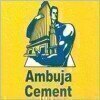Filter interviews by
Heidelberg Cement Interview Questions and Answers
20 Interview questions
Effective kiln maintenance ensures optimal performance, longevity, and safety in industrial operations.
Regular inspections: Conduct weekly checks for wear and tear on kiln components.
Temperature monitoring: Use thermocouples to ensure consistent heat distribution.
Lubrication: Apply appropriate lubricants to moving parts to reduce friction and wear.
Cleaning: Schedule routine cleaning of the kiln interior to prevent...
A limit switch is a mechanical device that detects the presence or position of an object, often used for controlling machinery.
Limit switches are commonly used in industrial applications to control machinery and equipment.
They can be activated by physical contact with an object, such as a moving part of a machine.
Examples include safety interlocks in elevators and position sensors in conveyor systems.
Limit switche...
Control valves regulate fluid flow and pressure in various systems, ensuring optimal performance and safety.
Control valves adjust the flow of liquids or gases in a system.
They can be operated manually or automatically using actuators.
Common types include globe valves, ball valves, and butterfly valves.
Used in HVAC systems to control temperature and pressure.
In chemical processing, they maintain the desired flow ra...
A packing plant operation involves processing, packaging, and distributing products, often in the food or manufacturing sectors.
Involves sorting and processing raw materials, e.g., fruits or meats.
Packaging products for distribution, ensuring they meet safety standards.
Utilizes machinery for efficiency, such as conveyor belts and sealing machines.
May include quality control checks to ensure product integrity.
Examp...
Implemented new maintenance schedule, reducing downtime by 20% and increasing productivity by 15%.
Implemented new maintenance schedule
Reduced downtime by 20%
Increased productivity by 15%
Alignment is the process of adjusting a vehicle's suspension to ensure proper handling and tire wear. The max allowance varies depending on the vehicle manufacturer's specifications.
Alignment involves adjusting the angles of the wheels to be parallel to each other and perpendicular to the ground.
The max allowance for alignment varies by vehicle make and model, but typically falls within a range of ±0.5 degrees for...
Cement testing ensures quality and performance through various physical and chemical tests to meet industry standards.
Fineness Test: Measures particle size using a sieve to ensure proper hydration.
Setting Time Test: Assesses initial and final setting times using Vicat apparatus.
Compressive Strength Test: Evaluates strength by applying pressure to hardened cement samples.
Soundness Test: Checks for expansion using L...
ERP stands for Emergency Response Plan. It is a plan outlining procedures to follow in case of emergencies.
ERP is a detailed plan outlining steps to be taken in case of emergencies such as fires, natural disasters, or accidents.
There are different types of ERP depending on the nature of the organization and the potential risks involved.
Common types of ERP include fire evacuation plans, medical emergency response p...
Cement making involves a multi-step process of mixing raw materials, heating them to a high temperature, and grinding the resulting clinker into a fine powder.
Raw materials such as limestone, clay, and sand are crushed and mixed in specific proportions.
The mixture is heated in a kiln at high temperatures to form a product called clinker.
The clinker is then ground into a fine powder with gypsum added to regulate se...
CFM stands for Continuous Flow Manufacturing, a production strategy focused on continuous and efficient production processes.
CFM aims to minimize waste and maximize efficiency by continuously moving products through the production process.
It involves the use of automation and just-in-time inventory management to streamline operations.
Examples of companies using CFM include Toyota and Dell, known for their efficien...
Heidelberg Cement Interview Experiences
31 interviews found
I appeared for an interview in Dec 2024, where I was asked the following questions.
- Q1. What are the best practices for kiln maintenance?
- Ans.
Effective kiln maintenance ensures optimal performance, longevity, and safety in industrial operations.
Regular inspections: Conduct weekly checks for wear and tear on kiln components.
Temperature monitoring: Use thermocouples to ensure consistent heat distribution.
Lubrication: Apply appropriate lubricants to moving parts to reduce friction and wear.
Cleaning: Schedule routine cleaning of the kiln interior to prevent buil...
- Q2. What is the relationship between cost, power, and inventory management?
- Ans.
Cost, power, and inventory management are interconnected, impacting efficiency and profitability in mechanical operations.
Cost management involves minimizing expenses while maintaining quality, affecting overall profitability.
Power management ensures efficient energy use, reducing operational costs and enhancing sustainability.
Inventory management balances stock levels to meet demand without overstocking, which ties up...
Manager Mechanical Interview Questions asked at other Companies
(2 Questions)
- Q1. Family members in family
- Q2. Why u want to quit your previous company
- Ans.
Seeking new challenges and growth opportunities in a more dynamic work environment.
Desire for career advancement
Looking for new challenges
Seeking a more dynamic work environment
(4 Questions)
- Q1. Describe job role on previous company
- Ans.
Managed quality control processes and ensured compliance with industry standards
Led a team of quality control inspectors to ensure products met specifications
Implemented quality control procedures to improve product quality and reduce defects
Conducted regular audits and inspections to identify areas for improvement
Collaborated with production and engineering teams to address quality issues and implement corrective acti...
- Q2. Discribe cement testing
- Ans.
Cement testing ensures quality and performance through various physical and chemical tests to meet industry standards.
Fineness Test: Measures particle size using a sieve to ensure proper hydration.
Setting Time Test: Assesses initial and final setting times using Vicat apparatus.
Compressive Strength Test: Evaluates strength by applying pressure to hardened cement samples.
Soundness Test: Checks for expansion using Le Cha...
- Q3. Is code of cement and types of cement
- Ans.
The code of cement refers to the standard specifications used to classify different types of cement.
The code of cement is typically based on the composition and properties of the cement.
Different types of cement include Portland cement, slag cement, and white cement.
Each type of cement has its own specific code that indicates its characteristics and intended use.
- Q4. Where u want to join they have 3 job location.
Assistant Manager Quality Control Interview Questions asked at other Companies
(3 Questions)
- Q1. Tell about yourself
- Ans.
Experienced mining professional with a background in engineering and management roles.
Bachelor's degree in Mining Engineering
10+ years of experience in the mining industry
Strong leadership and team management skills
Proven track record of improving operational efficiency
Familiarity with various mining machinery and equipment
- Q2. Best achievement
- Q3. It was good to answer
(2 Questions)
- Q1. Tell about yourself
- Ans.
Experienced mining professional with a strong background in managing mining machinery operations.
Over 10 years of experience in the mining industry
Proven track record of successfully overseeing mining machinery operations
Skilled in optimizing production efficiency and ensuring safety protocols are followed
Strong leadership and communication skills
Bachelor's degree in Mining Engineering from a reputable institution
- Q2. Achivement during experience
- Ans.
Implemented new maintenance schedule, reducing downtime by 20% and increasing productivity by 15%.
Implemented new maintenance schedule
Reduced downtime by 20%
Increased productivity by 15%
- Q1. What is a packing plant operation?
- Ans.
A packing plant operation involves processing, packaging, and distributing products, often in the food or manufacturing sectors.
Involves sorting and processing raw materials, e.g., fruits or meats.
Packaging products for distribution, ensuring they meet safety standards.
Utilizes machinery for efficiency, such as conveyor belts and sealing machines.
May include quality control checks to ensure product integrity.
Examples i...
- Q2. What is the procedure for packing cement
- Ans.
Cement packing involves careful procedures to ensure quality and prevent contamination during storage and transportation.
1. Selection of Packaging Material: Use moisture-resistant bags to prevent cement from hardening.
2. Weighing: Accurately weigh the cement to ensure each bag contains the correct amount, typically 50 kg.
3. Filling: Use automated machines to fill bags to maintain consistency and reduce manual handling.
...
- Q3. What is a diverter
- Ans.
A diverter is a device or mechanism that redirects flow or traffic from one path to another, often used in various systems.
Used in plumbing to redirect water flow, e.g., from a showerhead to a bathtub spout.
In traffic management, diverters can redirect vehicles to reduce congestion.
In electronics, a diverter can switch signals between different circuits.
Officer Interview Questions asked at other Companies
(1 Question)
- Q1. Tell me about yourself ?
- Ans.
I am a motivated student with a passion for learning, seeking an internship to apply my skills and gain practical experience.
Currently pursuing a degree in [Your Major] at [Your University], where I have developed strong analytical and problem-solving skills.
Completed a project on [Project Topic], which enhanced my understanding of [Relevant Skill or Tool].
Involved in extracurricular activities such as [Activity/Club],...
Internship Trainee Interview Questions asked at other Companies
(2 Questions)
- Q1. What is your role and responsibilities.
- Q2. What is ERP and it's type.
- Ans.
ERP stands for Emergency Response Plan. It is a plan outlining procedures to follow in case of emergencies.
ERP is a detailed plan outlining steps to be taken in case of emergencies such as fires, natural disasters, or accidents.
There are different types of ERP depending on the nature of the organization and the potential risks involved.
Common types of ERP include fire evacuation plans, medical emergency response plans,...
Skills evaluated in this interview
Safety Officer Interview Questions asked at other Companies
I applied via Approached by Company and was interviewed in Nov 2023. There were 2 interview rounds.

(2 Questions)
- Q1. Many questions related to cement and test on cement and presence in market
- Q2. About the cement market and presence
Interview Preparation Tips
Sales Officer Interview Questions asked at other Companies
I applied via Walk-in and was interviewed in Jan 2024. There was 1 interview round.
(4 Questions)
- Q1. Basics mechanical question
- Q2. What is a thermodynamics
- Ans.
Thermodynamics is the branch of physics that deals with the relationships between heat and other forms of energy.
Thermodynamics studies the transfer of energy in the form of heat and work.
It involves concepts like entropy, temperature, and energy conversion.
Examples include the efficiency of engines, refrigeration systems, and phase transitions in materials.
- Q3. Third law of motion
- Ans.
The third law of motion states that for every action, there is an equal and opposite reaction.
States that when one object exerts a force on a second object, the second object exerts an equal and opposite force on the first object
The forces always occur in pairs
Examples include a rocket pushing against the ground to lift off, or a person pushing against a wall
- Q4. Types of bearing
- Ans.
Types of bearings include ball bearings, roller bearings, plain bearings, and fluid bearings.
Ball bearings: use balls to reduce friction between two surfaces
Roller bearings: use cylindrical rollers to reduce friction
Plain bearings: have a simple surface with no moving parts
Fluid bearings: use a thin layer of liquid or gas to reduce friction
Mechanical Engineer Interview Questions asked at other Companies
I applied via Campus Placement and was interviewed in Mar 2023. There were 4 interview rounds.

2 rounds of GD
Each one lasted from 5 - 10 min.
(2 Questions)
- Q1. Tell us about yourself.
- Q2. What are your future goals.
(3 Questions)
- Q1. Question from Intership Experience.
- Q2. Question based on projects.
- Q3. Questions from favourite subject.
Interview Preparation Tips
Maintenance Engineer Interview Questions asked at other Companies
(2 Questions)
- Q1. Cement Related Tests
- Q2. Quality Of Cement
- Ans.
The quality of cement is determined by various factors such as strength, durability, setting time, and fineness.
Strength: Cement should have high compressive strength to withstand heavy loads.
Durability: Cement should be resistant to chemical attacks and weathering.
Setting Time: Cement should have a suitable setting time to allow for proper construction.
Fineness: Cement particles should be finely ground for better work...
Interview Preparation Tips
Technical Support Representative Interview Questions asked at other Companies

(2 Questions)
- Q1. Normal introduction and work experience
- Q2. What is cement how many types and more
- Ans.
Cement is a binding material used in construction. There are several types including Portland cement, white cement, and rapid-hardening cement.
Cement is a powdery substance made from a mixture of limestone, clay, and gypsum.
Portland cement is the most common type used in construction.
White cement is used for architectural purposes and to create colored concrete.
Rapid-hardening cement sets quickly and is often used in r...
Interview Preparation Tips
Quality Chemist Interview Questions asked at other Companies
Top trending discussions






Heidelberg Cement Interview FAQs
The duration of Heidelberg Cement interview process can vary, but typically it takes about less than 2 weeks to complete.
Tell us how to improve this page.
Heidelberg Cement Interviews By Designations
- Heidelberg Cement Graduate Engineer Trainee (Get) Interview Questions
- Heidelberg Cement Sales Representative Interview Questions
- Heidelberg Cement Instrumentation Technician Interview Questions
- Heidelberg Cement Sales Officer Interview Questions
- Heidelberg Cement Assistant Manager Interview Questions
- Heidelberg Cement Maintenance Engineer Interview Questions
- Heidelberg Cement Mechanical Engineer Interview Questions
- Heidelberg Cement Officer Interview Questions
- Show more
Interview Questions for Popular Designations
Overall Interview Experience Rating
based on 41 interview experiences
Difficulty level
Duration
Interview Questions from Similar Companies
Heidelberg Cement Reviews and Ratings
based on 505 reviews
Rating in categories
|
Assistant Manager
166
salaries
| ₹4.5 L/yr - ₹13 L/yr |
|
Deputy Manager
116
salaries
| ₹4.7 L/yr - ₹14.2 L/yr |
|
Senior Officer
59
salaries
| ₹3.6 L/yr - ₹7.4 L/yr |
|
Manager
34
salaries
| ₹7.5 L/yr - ₹19 L/yr |
|
Senior Manager
31
salaries
| ₹9.8 L/yr - ₹25 L/yr |

JK Cement

ACC

Ambuja Cements

Nuvoco Vistas
- Home >
- Interviews >
- Heidelberg Cement Interview Questions













